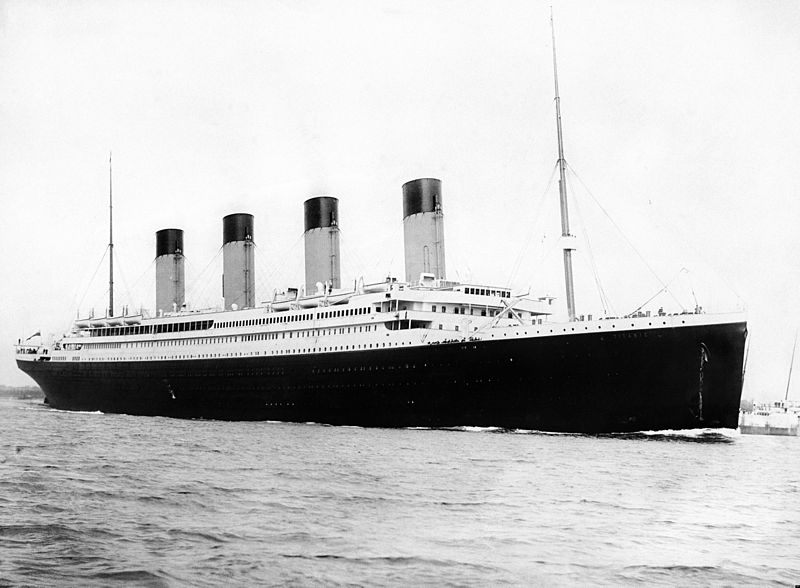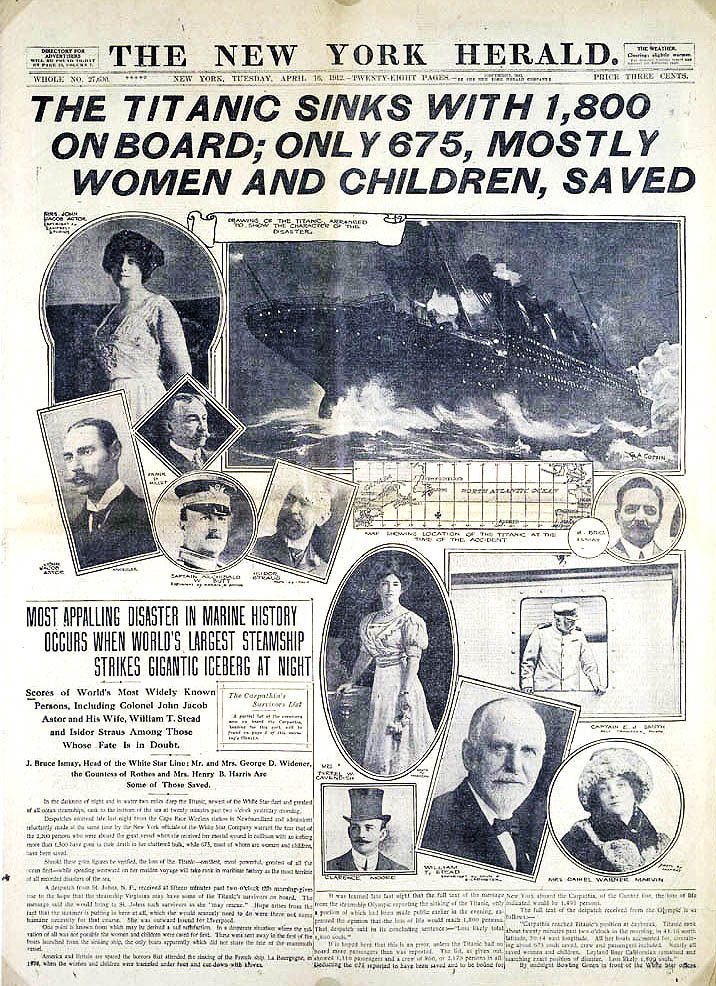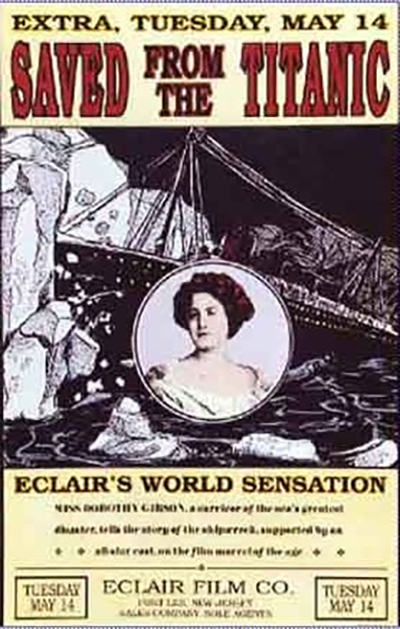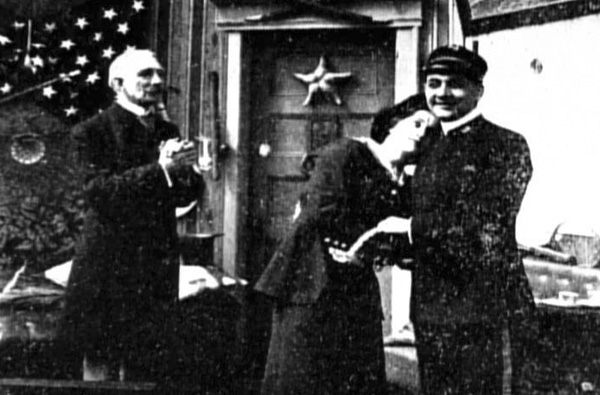The First Movie About the Titanic Starred a Titanic Survivor
It was released only a month after the ship sank.

It can feel like modern Hollywood is too quick to make entertainment out of tragedy, but it turns out that’s always been the case. The first Titanic film was actually made in 1912—only a month after the Titanic sank. Not only that, but it starred a Titanic survivor.
Dorothy Gibson was already a popular actress when she set sail on the ill-fated ship. The 22-year-old had an existing contract with the American branch of the French film company Éclair, so after the disaster she quickly tapped her resources to co-write a film that would be a starring vehicle for her—and, taking advantage of public interest in the tragedy, a marketing sensation for Éclair.

Gibson began her now-forgotten career as a model, known best as the original “Harrison Fisher Girl,” artist Harrison Fisher’s beautiful muse. Her face was in magazines, postcards, and various Edwardian merchandise for years. In 1911 Gibson had her big acting break after being hired by Éclair American Company to work as their leading lady. She starred in the hit silent comedy The Easter Bonnet and the incredibly well-received drama Hands Across The Sea, in which she played Molly Pitcher. Her leading lady looks caught the attention of Éclair producer Jules Brulatour, who began a secret affair with her. Brulatour played a big role in pushing his starlet mistress into the Titanic feature.
In the spring of 1912, Gibson spent several weeks on vacation in Europe with her mother. Brulatour wired her to return to America to begin work on two new films she was contracted to do. So Gibson and her mother went to Paris to book a trip on the Titanic, sailing out of Cherbourg on April 10th.

On the night the Titanic sank, Gibson played a late night game of bridge with a group of bankers from New York. She was making her way back to her room around 11:40, she later told reporters, when she heard a “long drawn, sickening crunch.” She decided to investigate and noticed the deck seemed lopsided, so she ran back to get her mother. Back on deck, she noticed that lifeboat 7 was virtually empty. Gibson invited her bridge partners to join her and her mother in the boat, which wound up being the first lifeboat launched from the ship. They made it safely back to land with quite a story to tell. Gibson gave Moving Picture News a very vivid account of the sinking a few weeks later, describing the event as a nightmare: “I will never forget the terrible cry that rang out from people who were thrown into the sea and others who were afraid for their loved ones.”
It’s likely that Saved From the Titanic was not Gibson’s idea. She reportedly did not immediately want to do this film, having barely recovered from the incident herself. Éclair told Moving Picture World that “the beautiful young cinematic star valiantly conquered her own feeling and forged ahead”—but it sounds like she barely forged ahead, bursting into tears several times during the shooting of the film in Fort Lee, NJ. It’s likely that Gibson felt she was being forced to relive a recent traumatic experience; she even wore the same clothes in the film that she wore on that dreadful night.

Still, her producers—one of whom was her lover, Jules Brulatour—urged her to continue telling her captivating story. Saved From the Titanic was completed in a week; like most films from this era, it was only ten minutes long. It was released a month to the day after the ship sank, making it the fastest film in the history of cinema to tell the story of national tragedy.
The plot is a romantic story in which Gibson plays a young student who is engaged to a sailor named Jack, and who returns to America via the Titanic after studying abroad. She tells her story with horrifying flashbacks that end in her fainting, proving that the sea—an important part of her navy fiance’s profession—is far too traumatic for her. Her character’s parents demand that Jack choose between his bride-to-be and his work. Ultimately Jack decides it is his patriotic duty not to give up his post. Gibson’s father in the film is moved to hear this and says, “Daughter, here is your husband.”

Éclair worked hard to promote the film, but critics weren’t immediately kind to the news of its release. The sinking of the Titanic was a monumental disaster, and critics had a hard time fathoming how any producer thought it would be a fitting subject for a film. For example, The New York Dramatic Mirror wrote:
The bare idea of undertaking to reproduce in a studio, no matter how well equipped, or by re-enacted sea scenes an event of the appalling character of the Titanic disaster, with its 1,600 victims, is revolting, especially at this time when the horrors of the event are so fresh in mind. And that a young woman who came so lately, with her good mother, safely through the distressing scenes can now bring herself to commercialize her good fortune by the grace of God, is past understanding…
The writer of the “Western Correspondent” column in The Moving Picture News was also scathing, hinting that Éclair manipulated Gibson’s story to bamboozle audience members into buying tickets. He writes: “Eclair, I am surprised that you would utilize such a serious thing as that great catastrophe to put out the studio production you did when you didn’t have one single feature that was real or genuine about the Titanic.”
But the trade publications gave the film excellent reviews, almost all of them praising Dorothy’s realistic portrayal. Many said it was the finest acting they’ve seen from her twenty-film career thus far, saying it watching her portrayal felt like she was reliving the experience. (That was likely because she was reliving it, clothes and all.) Moving Picture World praised the film as “a surprising and artistically perfect reel” and marveled at Gibson’s poise so shortly after her trauma.

Dorothy gave up acting shortly after releasing Saved From the Titanic, despite being the second-highest-paid actress in the industry at the time (after Mary Pickford). She dabbled in a career in opera, but ultimately disappeared from the spotlight entirely. Gibson and Brulatour’s affair was exposed by the press in 1913 after Gibson struck and killed a man while driving Brulatour’s car. Gibson later moved to France for a fresh start, where she became a Nazi sympathizer and allegedly worked in espionage. She changed allegiances in 1944, but it was too late for her. She was arrested by the Gestapo in Italy as a resistance agitator and imprisoned in San Vittore in Milan until she escaped in 1944. Dorothy was not compelled to make a film out of her WWII arrest and escape.
Sadly, due to a fire at Eclair Studios in 1914, most of Gibson’s 22 films—including Saved From the Titanic—are lost to history. Titanic film scholar Frank Thompson laments that unless a hidden reel turns up somewhere, it is unlikely we will ever get the chance to see it. Some silent film historians even consider this one of the most tragic losses in the silent film library—the earliest Titanic film, starring a survivor, is a historical relic that sounds almost too good to be true. But for Dorothy Gibson, the loss of a film that capitalized on her fresh trauma might have come as a relief.










Follow us on Twitter to get the latest on the world's hidden wonders.
Like us on Facebook to get the latest on the world's hidden wonders.
Follow us on Twitter Like us on Facebook